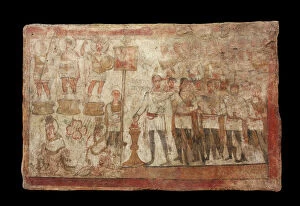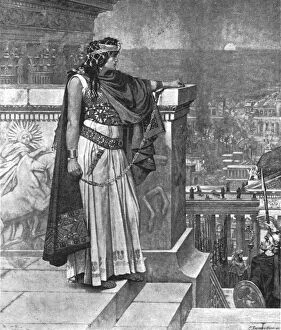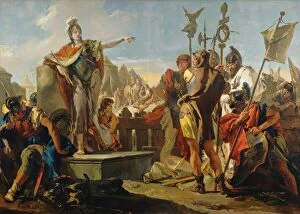Palmyrene Collection
Palmyrene, a captivating ancient city that thrived in the heart of Syria, holds within its walls a rich tapestry of history and culture
All Professionally Made to Order for Quick Shipping
Palmyrene, a captivating ancient city that thrived in the heart of Syria, holds within its walls a rich tapestry of history and culture. From Julius Terentius Performing a Sacrifice in A. D. 239 to the mesmerizing Female Bust from Palmyra dating back to the mid-2nd century AD, this enigmatic civilization has left behind an indelible mark. The remnants of Palmyra's glory can be seen through various artifacts and artworks that have withstood the test of time. The Funerary reliefs crafted meticulously from limestone tell tales of lives lived and lost, offering glimpses into the customs and beliefs cherished by its people. Each stroke on these stone canvases whispers stories untold. Amongst these relics lies a coin portraying King Vabalathus, whose reign between 270-275 is immortalized in metal form. This small yet significant piece serves as a reminder of Palmyra's political prowess during its zenith. The Beauty of Palmyra stands tall even today through intricately carved limestone sculptures like Male portrait in relief or Zenobia's last look at Palmyra depicted by Herbert Gustave Schmalz in his masterpiece from 1888. These masterpieces transport us back to an era where art flourished amidst architectural marvels. Ancient alphabets etched onto tables provide insight into the linguistic diversity that once echoed through this vibrant city. Egyptian, Phoenician, Hebrew alphabets stand side by side with their unique script - Palmyrene - showcasing how cultures intertwined seamlessly within this cosmopolitan hub. As we delve deeper into each artifact discovered within these ancient ruins, we are reminded not only of their aesthetic beauty but also their historical significance. They serve as portals connecting us to an era long gone but never forgotten – where life thrived against all odds and creativity knew no bounds.

















